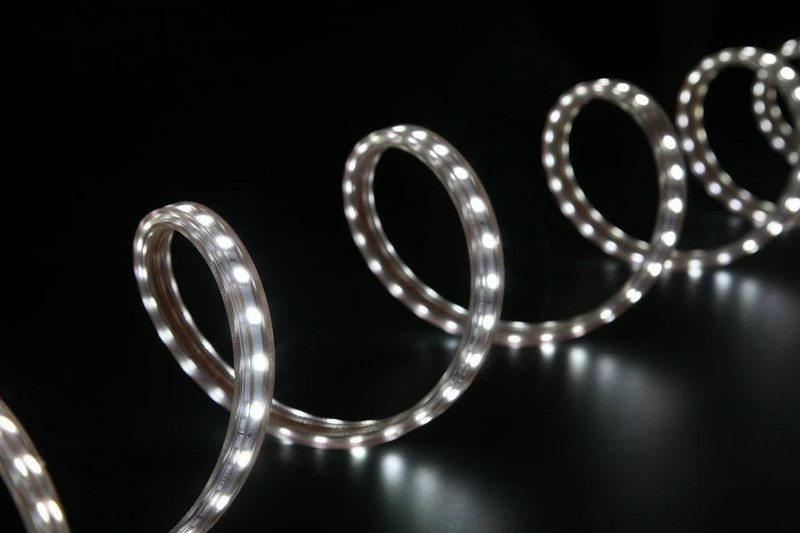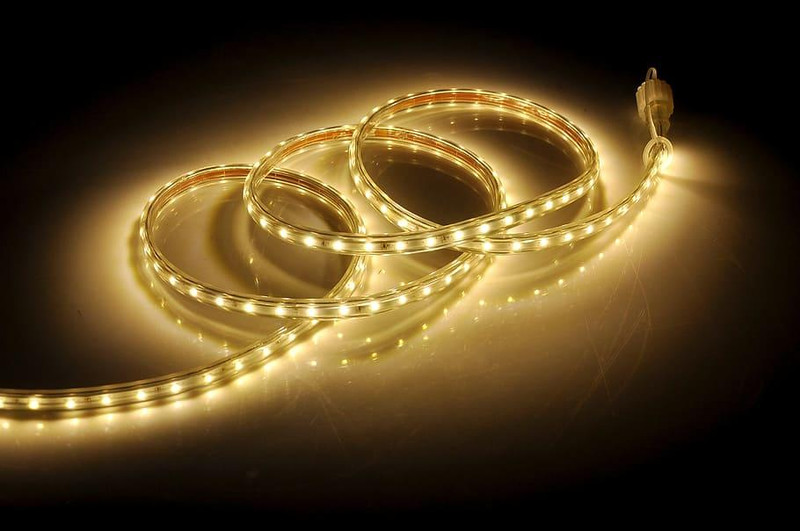|
|
|
|
|
Creation date: Sep 24, 2023 7:12pm Last modified date: Sep 24, 2023 7:12pm Last visit date: Dec 11, 2024 6:36am
1 / 20 posts
Sep 24, 2023 ( 1 post ) 9/24/2023
7:12pm
LED Strip Lights A Bright Idea for Your Boat (ledstriplightsforyourboat): edited 2/21/2024 5:29pm
In our previous article, we discussed the growing trend of LED lights on boats. We were thrilled to receive a lot of feedback and some fantastic questions about the various options available and the best installation methods. LED lights, also known as light emitting diodes, are not only significantly brighter than traditional marine lights but also consume very little power. They offer a quick and effective way to update and upgrade your boat’s lighting system. As someone who recently installed LED strip lights on my very own Catalina 36, I’d like to share some tips and tricks to help you with your own installation. The Traditional Choice: Rope LightIn the past, the only option for under-counter and accent lighting on boats was the traditional rope light. While it was mostly used for decorative purposes due to its 360-degree light distribution, rope lights had their drawbacks. Maneuvering them in tight spaces proved difficult as they couldn’t be bent for 90-degree corners without breaking the internal wires. Customization was limited as rope lights could only be cut in certain sections and they tended to get very hot. Additionally, they were generally more expensive. The New Player: Strip or Tape Lighting
The recent introduction of strip or tape lighting has revolutionized the boat lighting market. Strip lighting can be used for both under-counter decorative lighting and task lighting. Unlike rope lights, strip lights emit light in one direction, providing a more focused illumination. Installing strip lighting is a breeze, thanks to L-shaped connectors that allow for easy 90-degree turns. These lights can be cut anywhere between the bulbs and use adhesive tape to stick to most surfaces. They come in warm and bright white, as well as RGB (red, blue, green) options, offering multiple colors. However, it’s worth noting that strip lighting has a limited run length of approximately 16 feet before requiring its own power source.
Strips are typically sold with options of 30, 40, 60, or 120 LEDs per meter. However, be cautious when purchasing, as some manufacturers sell strips in feet or by the reel (with one reel equivalent to 16.4 feet or five meters). The 30 LED strip draws three amps, the 60 LED strip draws double that, while the 120 LED strip provides the brightest light and only draws four amps. The brightness is measured in lumens, rather than watts, and varies for each project. Here’s a rough guideline: Recommended Lumens Per Foot for Different Uses:
It’s important to note that 12 watts of LED strip lighting is equivalent to a 60-watt incandescent bulb. To determine the appropriate transformer for your needs, multiply the length of the strip by the wattage. For example, if you have a 7-meter strip with a wattage of 4.8 watts, the total wattage would be 33.6 watts. Therefore, you would require a 60W transformer. If you’re planning to install strip lighting on the exterior of your boat, such as on your back deck, look for IP65-rated (water-resistant) or IP68-rated (submersible) strip lighting that includes marine-grade 3M double-sided tape.
If you’re installing strip lighting over a shiny dark countertop, consider adding an aluminum profile diffuser lens. These lenses, available in opaque or frosted options, eliminate the spotting effect and make cleaning the lights easier, especially if they’re installed near galley splashes. Remote Dimmers: Take Control of Your LightingOne fascinating feature of LED dimmers is their ability to control lights remotely. For instance, you can install an RF dimmer and transmitter kit near the LED strip lighting, allowing the dimmer to be remotely activated via a wireless handheld or a small tape-on LED dimmer. The tape-on dimmer switch is particularly useful as it can be conveniently mounted without the need for running wires between the dimmer and its control.
The flexibility of RF dimmer switches goes even further. You can have one RF dimmer transmitter switch paired with multiple RF dimmer receivers, enabling control over all the LED strip lighting on both sides of the hull, without the need for any additional wiring. Another possibility is to have one RF dimmer receiver controlled by two RF dimmer transmitter switches, especially useful for boaters who want the option of turning on the floor illumination from both the aft and bow of the boat.
>>> Read more: The Bright Evolution: Exploring the World of LED Lights FAQs:How do LED strip lights enhance the interior of a boat?LED strip lights enhance the interior of a boat by providing versatile and customizable lighting options. They can be used to create ambient lighting, highlight specific areas, and improve aesthetics, making the boat’s interior more visually appealing and functional. What are the benefits of using marine LED lighting on a boat?The benefits of using marine LED lighting on a boat include energy efficiency, longer lifespan, and durability. LED lights consume less power, reducing battery drain. They also last longer than traditional lighting options and are resistant to vibrations and impacts common on boats. Are there specific LED strip lights designed for boats?
Yes, there are specific LED strip lights designed for boats. Marine-grade LED strips are built to withstand the harsh marine environment, including exposure to water, salt, and UV rays, ensuring they perform reliably on a boat. How do you install LED strip lights on a boat?Installing LED strip lights on a boat involves cleaning the surface, measuring and cutting the strips to fit, attaching them securely, and connecting them to a power source. Proper installation ensures safety and functionality.
>>> Follow us to find out more about the best waterproof LED strip lights for boats Can LED strip lights be used for both interior and exterior boat lighting?Yes, LED strip lights can be used for both interior and exterior boat lighting. Their versatility allows you to illuminate various areas inside and outside the boat, enhancing both aesthetics and safety. What should I look for in waterproof LED strips for my boat?When looking for waterproof LED strips for your boat, consider IP ratings (Ingress Protection), with higher numbers indicating better water resistance. Additionally, choose strips designed for marine use, which typically come with extra protection against moisture and corrosion. Are RGB LED strips a popular choice for boat accent lighting?RGB LED strips are indeed a popular choice for boat accent lighting. They offer a wide range of colors and can be programmed to create dynamic lighting effects, adding style and ambiance to your boat’s interior or exterior. What are the advantages of having underwater LED lights on a boat?The advantages of having underwater LED lights on a boat include attracting marine life for night-time viewing, enhancing the boat’s appearance, and improving safety by increasing visibility in the water.
>>> Follow us to stay up-to-date with the latest information about boat lights How can I ensure the longevity of my boat’s LED lighting system?To ensure the longevity of your boat’s LED lighting system, use high-quality marine-grade LED products, follow proper installation techniques, and perform routine maintenance, including cleaning and checking for any loose connections. Are there any regulations or guidelines for using LED strip lights on boats?Regulations and guidelines for using LED strip lights on boats may vary by location. It’s essential to research and comply with local and national marine lighting regulations, including requirements for navigation lights, to ensure safe and legal usage. |


